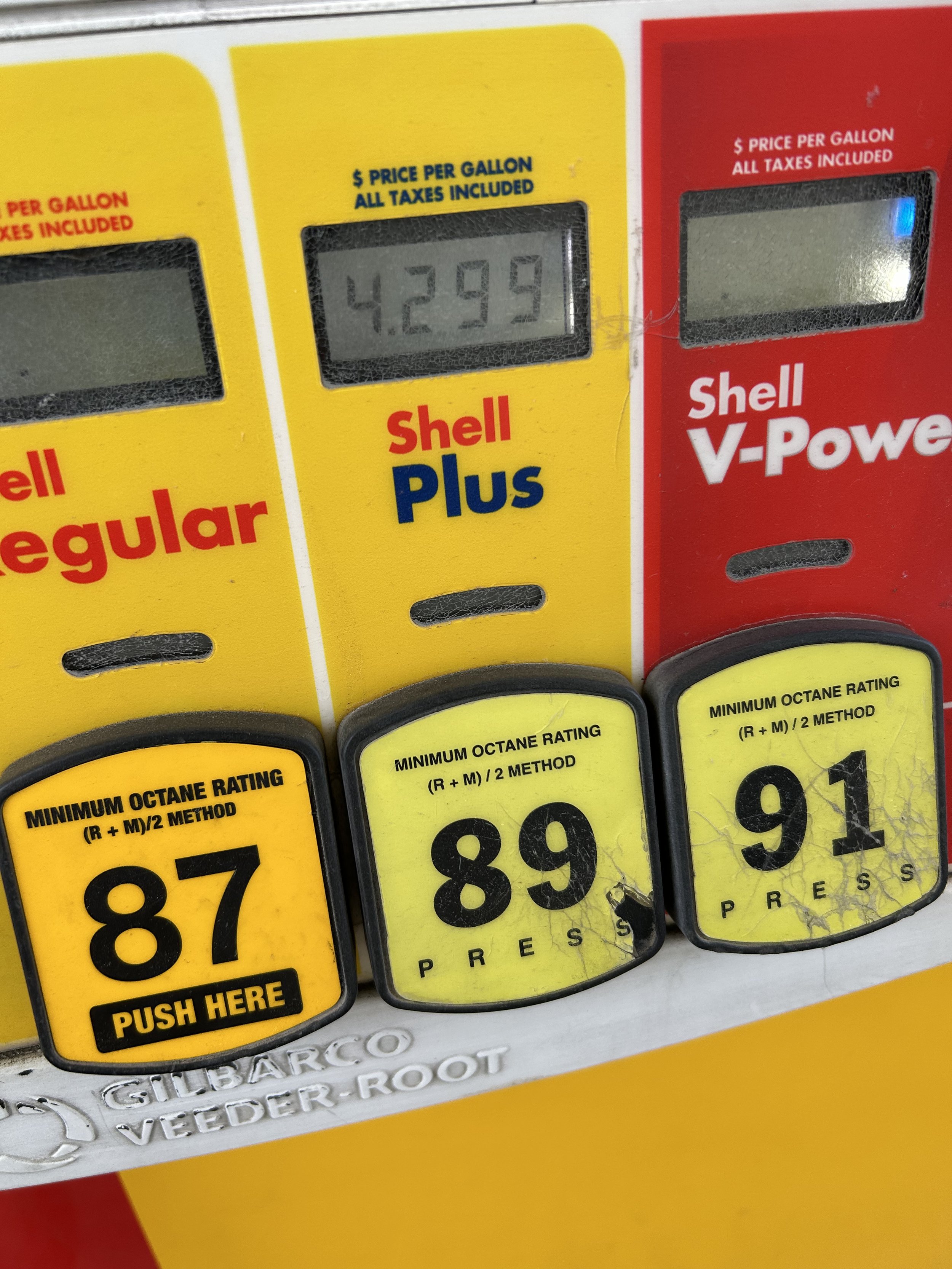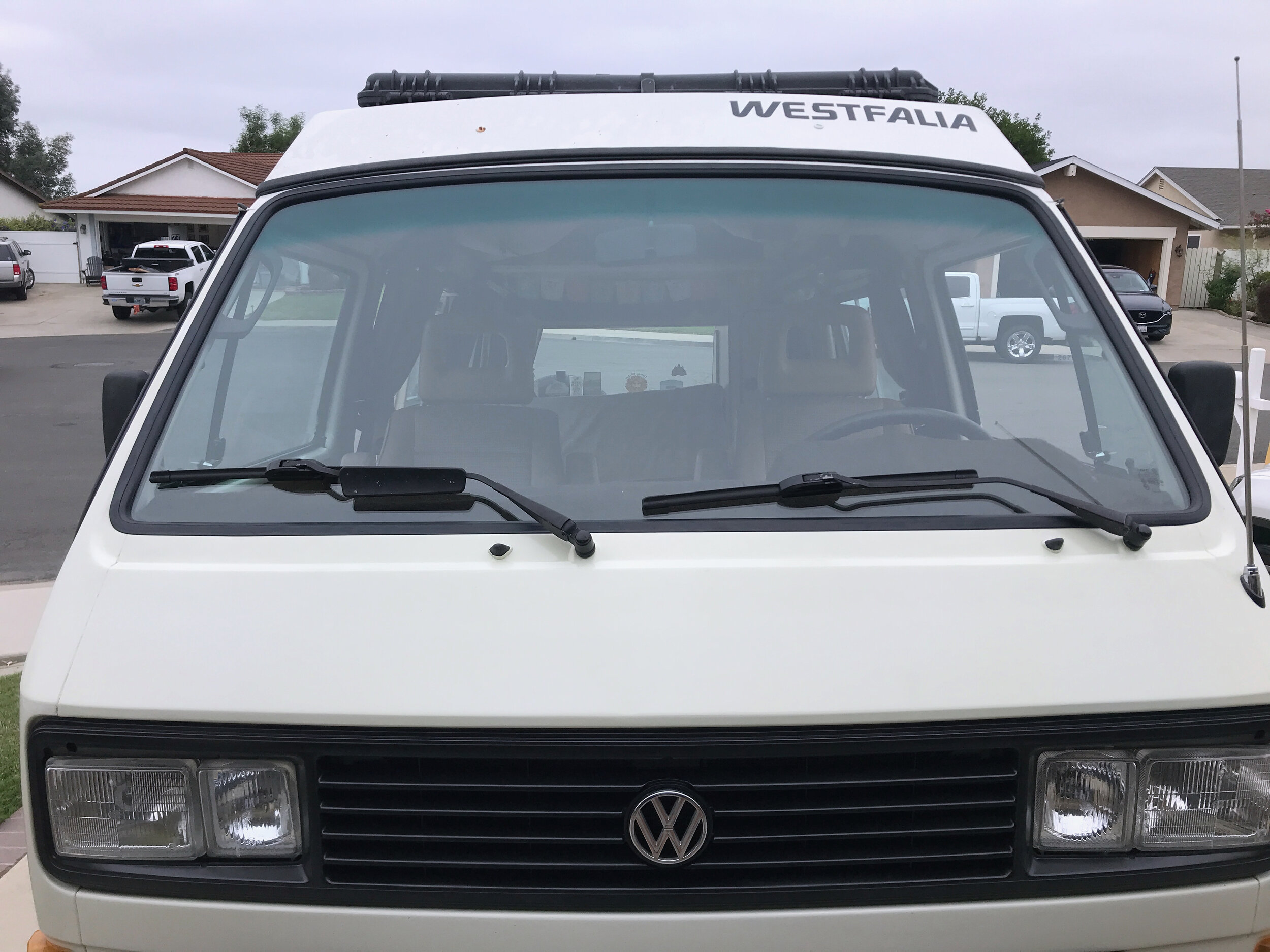Vanagon Fuel Efficiency
In the big picture the Vanagon Type 2 T3 in America gets decent MPG
(Updated jan 10, 2025) A side note: Whenever you are calculating fuel mileage do it by hand. Miles driven divided by gallons used. Never depend on the vehicle’s MPG button. They do not work correctly.
For a vehicle that has been described as a rolling loaf of bread by many — the Vanagon is anything but efficient with its fuel. However, when compared with other vans its size the Type 2 T3 actually does ok when it comes to fuel economy.
If you’ve driven a Vanagon you know that fuel mileage is not its strong point. But it’s not the weakest link either. In fact, I am so happy that I get good fuel mileage for a 35 year old vehicle because there are much newer vehicles that do much worse.
I pulled off 18-21 mpg on a long 6,000-mile adventure in a fully loaded 1986 Westfalia camper. I averaged about 20 mpg. And I am not alone. Many others report 18 to 21 miles per gallon.
Sure, I’d love to see better mpg, but for what is considered a Class B motorhome (according to insurers) those numbers are damn good. My Vanagon camper also weighs more than 4,000 pounds! If you think that is terrible fuel mileage, other reports suggested that later-model VW Eurovans get a measly 16 mpg, and most Class B motorhomes (I’ve test-driven plenty) get far worse… sometimes in the single digits. You can do your own research at https://www.fuelly.com.
Poor MPG ratings are subject to many variables; how fast you drive, the general shape of your vehicle, the rpm you maintain, traffic, hills, and the list goes on. But overall, I have hand-calculated my Vanagon’s mpg several times on trips across the U.S. and it always comes out the same; 18-21 mpg. I also drive a perfectly maintained Vanagon with a 2.3 liter flat-four engine and a well running automatic transmission. The manual transmission is said to get even better mpg.
So whenever you read about fuel mileage in a Vanagon know that mpg can change from one vehicle to the next. Not all Vanagons are created equal because a dirty air filter, low tire pressure, or an engine with corroded plugs affect fuel efficiency. Heck, carrying too many mountain bikes and passengers can drag mpg down.
I’ve been keeping track of Vanagon fuel economy online, specifically for the Type 2 T3, and on average, like I mentioned before, real-world mpg is hovering about 19 or so. That’s accurate. Can it do better? The short answer is yes, ever so slightly. I hear the Subaru engine swap helps increase the mpg. But I don’t know personally if that information is 100 percent correct. Judgement pending.
With all of this nice stuff said about Vanagon it was recently pointed out to me on a FB group that some owners are getting a measily 12-14 mpg. I believe them. It’s possible depending on their engine, transmission, weight load, etc. that some Vanagons see much less than 18-21 mpg I revealed. If that’s your case too, I’d get my vehicle into a qualified specialist because something is wrong, somewhere and I’m not the person to shed light on it. But it is unusually low.
Here’s my new 2.3 from Go Westy. I wish it was always this clean…
Ways to Increase and Maintain Your MPG: Always run with fresh plugs, wires, coil, and distributor.
Keep your tires properly inflated at all four corners.
Keep your cargo load to a minimum when possible.
Limit using a heavy pedal and maintain a constant speed (under 65 mph preferably) Use cruise control if you have it.
Avoid long, steep grades if possible. Find flatter alternative routes.
Don’t idle the engine at Starbucks for prolonged periods unnecessarily.
Swap out your fluids and clean out the air filter regularly.
If you have A/C plan to use it sparingly.
If you are running a cargo rack on the roof plan to add a wind foil to it to reduce drag.
Get your Vanagon’s wheels aligned every few years.
Increasing fuel mileage is doable using these methods, but don’t expect miracles. Vanagons are neither light nor aerodynamic. That’s the problem. For a vehicle that can double as a backcountry camper 18 or so mpg isn’t too shabby in the city or on the highway.
Most Class B motorhomes don’t do anything close to 18. So consider yourself lucky.

































